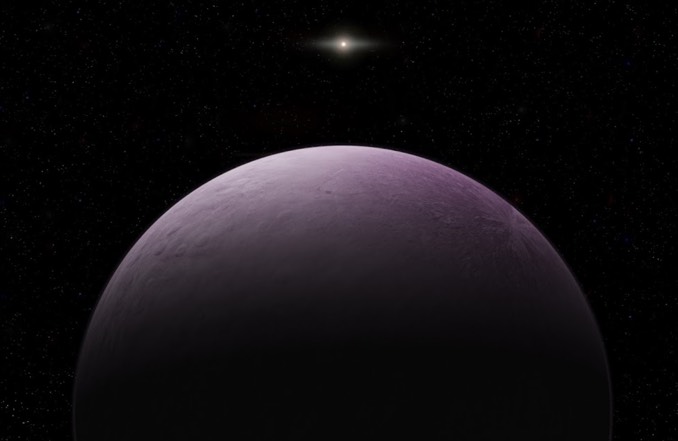
Astronomers searching for denizens of the extreme outer Solar System, including Planet X, the as-yet-unseen super-Earth thought to be shaping the orbits of Kuiper Belt bodies at enormous distances, have found a 500-kilometre-wide (300-mile-wide) body a record 120 times farther from the Sun than Earth, or roughly 18 billion kilometres (11 billion miles).
Likely taking about 1,000 years to complete one trip around the Sun, the body, appropriately nicknamed “Farout,” is the most distant body yet found in Earth’s solar system, the first at a distance greater than 100 astronomical units, or 15 billion kilometres (9.3 billion miles).
The discovery was made by Carnegie’s Scott S. Sheppard, David Tholen of the University of Hawaii and Chad Trujillo Northern Arizona University using the Japanese Subaru 8-metre telescope atop Mauna Kea in Hawaii on 10 November.
The discovery was confirmed with follow-up observations this month using the Magellan telescope at Carnegie’s Las Campanas Observatory in Chile. Based on its brightness, the researchers concluded it likely is a roughly spherical dwarf planet with a pinkish hue indicating an icy surface.
The International Astronomical Union’s Minor Planet Center provisionally catalogued the body as 2018 VG18.

To put the discovery into perspective, the previous record holder is Eris at a distance of about 96 astronomical units. Pluto is currently about 34 AU from the Sun, making Farout three-and-a-half times more distant than the Solar System’s most famous dwarf planet.
2018 VG18 was discovered during the team’s on-going search for Planet X, first proposed when the same researchers in 2014.
“2018 VG18 is much more distant and slower moving than any other observed Solar System object, so it will take a few years to fully determine its orbit,” said Sheppard. “But it was found in a similar location on the sky to the other known extreme Solar System objects, suggesting it might have the same type of orbit that most of them do.
“The orbital similarities shown by many of the known small, distant Solar System bodies was the catalyst for our original assertion that there is a distant, massive planet at several hundred AU shepherding these smaller objects.”
Because 2018 VG18 and similar bodies are so far from the inner Solar System, they are not affected by the gravity of Jupiter and the other known gas giants. As such, they can be used in the hunt for Planet X by carefully monitoring their orbits. But first, researchers will have to observe 2018 VG18 for an extended period to nail down those details.
“All that we currently know about 2018 VG18 is its extreme distance from the Sun, its approximate diameter, and its colour,” said Tholen “Because 2018 VG18 is so distant, it orbits very slowly, likely taking more than 1,000 years to take one trip around the Sun.”



